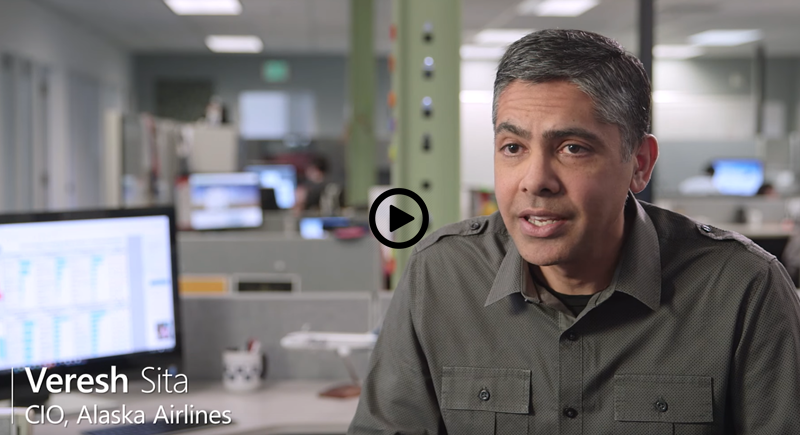The past few years, innovation and increasingly savvy users have dramatically raised the bar for app quality. Industry leaders have taken notice, and they’re capitalizing on three core trends to stay ahead of their users—and their competition: (1) transitioning from basic apps to amazing mobile experiences; (2) evolving from simple, data-aware functions to intelligent, data-driven apps that learn and improve; and (3) shifting from building one-off apps to creating a mobile portfolio. Discover how you can apply these same ideas to transform your mobile experiences and grow your business.
Want more insights into the strategies discussed in this post? Read the e-book, Out-mobile the competition: Learn how to set your apps apart with mobile DevOps and the cloud.
Shift 1: From good apps to amazing experiences
Keep users coming back
Standard, functional apps are no longer enough. Today’s mobile users, whether they’re customers or employees, want more than well-designed user interfaces, geolocation, and other ‘standard’ app functionality. They demand fully native mobile apps, with fast, relevant, and personalized features that work well on their device of choice.
Bloomin’ Brands, Inc., uses mobile to redefine the casual dining experience, build customer loyalty, and ensure repeat visitors. For its Outback Steakhouse brand, the Outback Steakhouse app enables customers to quickly and easily locate and reserve tables at nearby locations, automatically check in with hosts, get seated, pay for meals, and redeem vouchers.
See how users love the five-star apps from Outback Steakhouse:
Treat every user like a consumer
There’s no longer a distinction between “enterprise” and “consumer” apps. Employees expect the same seamless and convenient experiences from their workplace apps that they get from their personal apps. If IT fails to deliver, employees quickly abandon apps—and organizations are left with wasted effort and investments.
Alaska Airlines sets the standard for treating its team members just like customers, with a portfolio of employee-facing apps that mirror Alaska’s consumer user experience. Its internal Hopper app, for example, lets employees access their travel benefits from anywhere, automatically check in, view flight status, and receive mobile boarding passes.
See how Alaska brings the consumer experience to employees:
Shift 2: From data-aware apps to data-driven intelligence
Turn data into insights
Five-star apps do more than merely allow users to enter and edit data—they’re driven by data intelligence. They locate users, track how users are interacting with their apps, understand what customers are purchasing, and much more. This information helps companies recognize trends, increase customer loyalty or employee satisfaction, and make informed business decisions.
Nuvem Tecnologia combines mobile and the cloud to connect big data capabilities with rural farmers everywhere. Nuvem Tecnologia’s AgroSIG app modernizes complex agricultural processes for farmers throughout Brazil, centralizing farm data and eliminating error-prone paper reporting. From analyzing historical data to identifying pest problems with GPS and device photo capture, the AgroSIG app equips farmers with the information they need to make real-time decisions and improve their harvests.
See how Nuvem drives agricultural processes with data:
Shift 3: From individual apps to a multi-app portfolio
Create an innovation hub
The third major shift isn’t about the mobile app experience itself, but about the way your business creates and updates apps. You need to think about your mobile strategy as a core component of your business strategy, starting by moving from monolithic apps to an entire portfolio of role- or function-specific apps.
Industry leaders have repeatable, automated processes, giving them the fast feedback and release cycles they need to deliver new projects and continuously improve existing apps.
Dutch Railways embodies this trend of reimagining mobile experiences and shifting from weighty, monolithic apps that “do everything” to single-purpose, lightweight apps. Instead of simply rebuilding the existing Rail Pocket—Dutch Railways’ clunky, legacy communication system—for new devices, the development team created eight function-specific apps, including time sheets, train timetables, maintenance logs, and more. Now, Dutch Railways can quickly and easily improve apps and add new functionality.
See how Dutch Railways creates fast, data-rich apps for more than 7,000 staff members:
Bottom line
In a mobile-first world, user expectations and business demands are constantly evolving. Successful industry leaders embrace and make these changes work for their businesses. Discover how you can stay competitive and deliver the new mobile experience with the e-book, Out-mobile the competition: Learn how to set your apps apart with mobile DevOps and the cloud.
 |
Cormac Foster, Senior Product Marketing Manager
Cormac is responsible for mobile Product Marketing. He came to Microsoft from Xamarin, where he was responsible for Analyst Relations and thought leadership. Prior to Xamarin, Cormac held a variety of roles in software testing, research, and marketing. |






0 comments